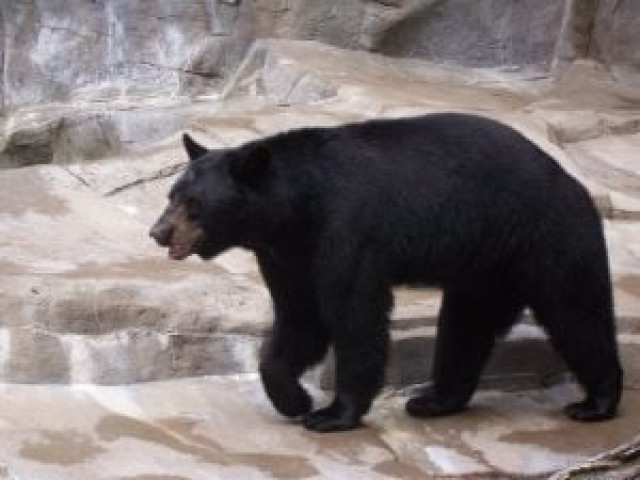Yosemite bears turn health nuts with junk food off menu
Estimated 350 to 400 black bears roam Yosemite, one of the most popular US tourist destinations.

Estimated 350 to 400 black bears roam Yosemite, one of the most popular US tourist destinations. PHOTO: FILE
An estimated 350 to 400 black bears roam Yosemite, one of the most popular US tourist destinations. Interactions between the park's bears and people reached a record level in 1998 as the animals raided campgrounds and broke into cars in search of groceries and leftovers, according to Yosemite spokesman Scott Gediman.
After recording 1,584 human-bear interactions that year, the park east of San Francisco adopted a policy in 1999 that included placing bear-resistant food storage containers at campgrounds and cracking down more forcefully on people leaving out items like chips or bread, Gediman said.
The initiative seems to have paid off in the park, where waterfalls and sequoia trees draw tourists from around the globe. A research paper in this month's edition of the journal Frontiers in Ecology and the Environment found a 63 percent drop in the proportion of human food in the diet of Yosemite's bears.
The animals now eat the same amount of human food as they did in 1915, when the park had a few thousand visitors annually compared to the current count of 4 million people a year, the study suggested. The number of bear-human interactions has also dropped dramatically, to just 155 in 2012, Gediman said.
That comes as the park's approach to wildlife management has evolved dramatically since the park was created in 1890, as rangers began recognizing the need to keep bears away from people.
For decades until the mid-1960s, rangers would feed bears in open areas and allow visitors to sit in bleachers to watch the spectacle, Gediman said. "It was entertainment," he said.
Jack Hopkins, a research fellow at the University of California, Santa Cruz, who led the study, said he traced how much human food bears were consuming by stringing up barbed wire in the park to snag hair from the animals.
The study analyzed the hair, comparing it to bones from bears that inhabited the park around 1915 and in later decades. Researchers looked for certain types of nitrogen and carbon isotopes in the hair and bones to determine how much human food they were consuming, since those isotopes are indicative of a human-like diet.
The analysis showed Yosemite bears were eating 63 percent less human food in the period after the new policies were put in place than between 1975 and 1985, a period during which some bears were consuming more human food than at any other time previously recorded.
Bears and people have heavy carbon isotope in tissue because corn has heavy signature.
Among the many downsides of human food consumption for bears is that they may suffer from rotting teeth because of the high sugar content in the pilfered chow, Hopkins said. Furthermore, a bear hooked on human food will keep coming back, putting both humans and bears at risk, he said.
"One of the big things is to put more focus into prevention management," Hopkins said. "Take care of the problem at its root, which is removing human food from the landscape and keeping it in a place where animals cannot get it."
As Yosemite officials have succeeded in keeping human food away from bears, rangers are now forced to kill only one or two of the animals a year compared to seven or eight annually in the 1990s, Gediman said.



















COMMENTS
Comments are moderated and generally will be posted if they are on-topic and not abusive.
For more information, please see our Comments FAQ